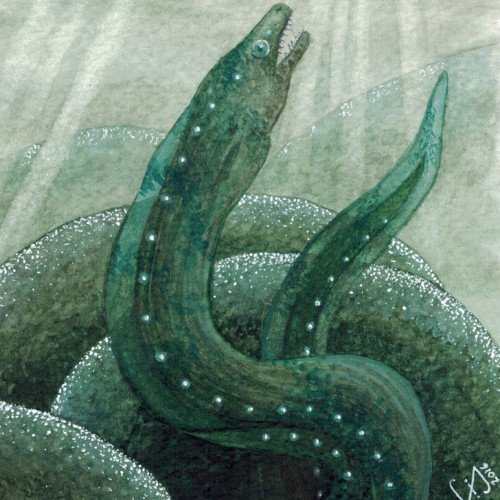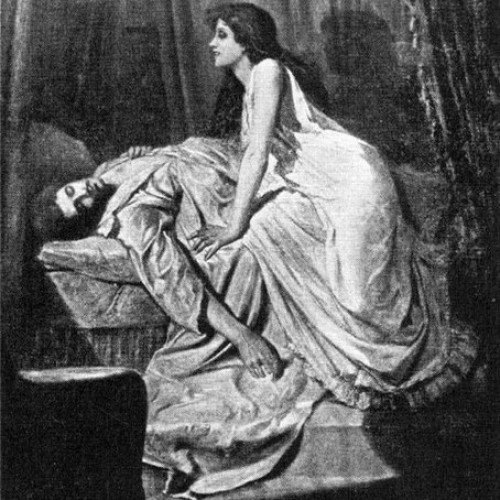Abaia VS Vampire

Abaia
Abaia is a huge, magical eel in Melanesian mythology. According to Melanesian mythology the Abaia is a type of large eel which dwells at the bottom of freshwater lakes in the Fiji, Solomon and Vanuatu Islands. The Abaia is said to consider all creatures in the lake its children and protects them furiously against anyone who would harm or disturb them. It is said that those who are foolish enough to try to catch the fish from a lake containing the Abaia are immediately overwhelmed by a large wave caused by the thrashing of the Abaia's powerful tail. Another version of the legend states that if someone were to harm a creature living in the Abaia's home, the Abaia would cause a great rain storm flooding the land and drowning those who had caused the harm. One example of this ability is illustrated in the following story: One day a man discovered a lake in which were many fish, and at the bottom of the lake lived a magic eel, but the man knew it not. He caught many fish and returned the next day with the people of his village whom he had told of his discovery, and they also were very successful, while one woman even laid hold of the great eel, Abaia, who dwelt in the depths of the lake, though he escaped her. Now Abaia was angry that his fish had been caught and that he himself had been seized, so he caused a great rain to fall that night, and the waters of the lake also rose, and all the people were drowned except an old woman who had not eaten of the fish and who saved herself in a tree.
Statistics for this Xoptio

Vampire
A vampire is a creature from folklore that subsists by feeding on the vital essence (generally in the form of blood) of the living. In European folklore, vampires are undead creatures that often visited loved ones and caused mischief or deaths in the neighborhoods they inhabited while they were alive. They wore shrouds and were often described as bloated and of ruddy or dark countenance, markedly different from today's gaunt, pale vampire which dates from the early 19th century. Vampiric entities have been recorded in most cultures; the term vampire was popularized in Western Europe after reports of an 18th-century mass hysteria of a pre-existing folk belief in the Balkans and Eastern Europe that in some cases resulted in corpses being staked and people being accused of vampirism. Local variants in Eastern Europe were also known by different names, such as shtriga in Albania, vrykolakas in Greece and strigoi in Romania. In modern times, the vampire is generally held to be a fictitious entity, although belief in similar vampiric creatures such as the chupacabra still persists in some cultures. Early folk belief in vampires has sometimes been ascribed to the ignorance of the body's process of decomposition after death and how people in pre-industrial societies tried to rationalize this, creating the figure of the vampire to explain the mysteries of death. Porphyria was linked with legends of vampirism in 1985 and received much media exposure, but has since been largely discredited.The charismatic and sophisticated vampire of modern fiction was born in 1819 with the publication of "The Vampyre" by the English writer John Polidori; the story was highly successful and arguably the most influential vampire work of the early 19th century. Bram Stoker's 1897 novel Dracula is remembered as the quintessential vampire novel and provided the basis of the modern vampire legend, even though it was published after fellow Irish author Joseph Sheridan Le Fanu's 1872 novel Carmilla. The success of this book spawned a distinctive vampire genre, still popular in the 21st century, with books, films, television shows, and video games. The vampire has since become a dominant figure in the horror genre.